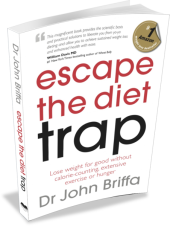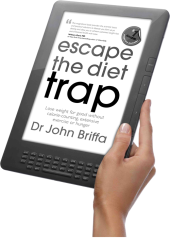One claim that is often made about cholesterol-reducing ‘statin’ drugs is their ability to reduce cardiovascular events (essentially heart attacks and strokes) by a third. This is a reference to studies in which individuals have been treated with a, say, a statin or a placebo (randomised controlled trials). Saying that a drug reduces risk of cardiovascular disease by a third is relatively meaningless, though, because it needs to be taken in the context of overall risk.
Imagine, for a moment, that 100 people are followed for a length of time and during that time 3 have a cardiovascular event. With statins, maybe 2 would have such an event. So, while the incidence of cardiovascular events has fallen by a third, the real reduction has been just 1 per cent. In other words, quoting a ‘third reduction in risk’ can give us a very inflated idea about the overall effectiveness of statins.
Another way to gauging the effectiveness of statins is to look at relationship between the numbers of statin prescriptions being written and rates of cardiovascular disease. In many parts of the world, statin use has increased considerably. Have we seen declines in cardiovascular disease that mirror this increase in statin use?
I was interested to read a recent study, where researchers assessed the relationship between statin prescription rates and rates of heart disease across Sweden [1]. According to this research, statin prescriptions increased about 300 per cent from 2008 and 2012. Yet, heart attack rates remained essentially the same.
The authors write: “The hypothesis was that a big increase in statin utilisation could be related to a decrease in [heart attack] mortality two years later… However, we found no connection between the change in statin utilisation and change in [heart attack] mortality two years later.”
The authors seem somewhat surprised by their findings and state: “The benefits shown in clinical trials could not be recognised despite that a high fraction of the population studied used statins.”
However, in the paper, the authors discuss findings from other research which makes their own finding quite predictable, I think. For example, the authors quote data regarding the numbers of individuals needed to be treated with a statin over the course of one year to prevent, say, one heart attack. This number, according to the authors, is 235 for men. So, over two years, the number would be about 120. What this means is that over two years, less than 1 per cent of men will be spared a heart attack, but more than 99 per cent will not benefit.
The authors also state that in women without a history of cardiovascular disease, statins have not been shown to reduce the risk of non-fatal heart attacks or death due to heart attack or stroke (cardiovascular death).
Bearing these findings mind, would one expect to see rising statin prescription rates leading to significant falls in rates of heart attacks? I think the answer is no.
In the abstract of their paper the authors refer to the “excellent preventive effect” of statins seen in clinical trials and seem perplexed that these do not appear to translate to benefits within the population they studied. In reality though, statins do not have an “excellent preventive effect” at all – hardly anyone that takes them stands to benefit.
References:
1. Nilsson S, et al. No connection between the level of exposition to statins in the populations and the incidence/mortality of acute myocardial infarction: An ecological study based on Sweden’s municipalities. Journal of Negative Results in Biomedicine 2011;10:6 [hr]
[box style=”rounded” border=”full”]
Dr John Briffa’s best-selling ESCAPE THE DIET TRAP – lose weight without calorie-counting, extensive exercise or hunger is available in the UK and US
“This magnificent book provides the scientific basis and practical solutions to liberate you from yo-yo dieting and allow you to achieve sustained weight loss and enhanced health with ease.”
William Davis MD – #1 New York Times bestselling author of Wheat Belly
To read some of the dozens of 5-star reviews for this book [button link=”http://www.drbriffa.com/amazon-reviews-for-escape-the-diet-trap/” color=”silver” text=”dark” window=”yes”]click here[/button]
To buy a paperback copy of the book from amazon.co.uk [button link=”http://www.amazon.co.uk/Escape-Diet-Trap-John-Briffa/dp/0007447760/ref=tmm_pap_title_0?ie=UTF8&qid=1324815918&sr=1-1″ color=”orange” window=”yes”]click here[/button]
To buy a kindle version of the book from amazon.co.uk [button link=”http://www.amazon.co.uk/Escape-the-Diet-Trap-ebook/dp/B005ODY0RW/ref=tmm_kin_title_0?ie=UTF8&qid=1324815918&sr=1-1″ color=”orange” window=”yes”]click here[/button]

To buy a print copy of the book from amazon.com [button link=”http://www.amazon.com/Escape-Diet-Trap-calorie-counting-extensive/dp/0957581602/” color=”orange” window=”yes”]click here[/button]

To buy the kindle version of the book from amazon.com [button link=”http://www.amazon.com/dp/B00BLQ40QM” color=”orange” window=”yes”]click here[/button]
[/box]